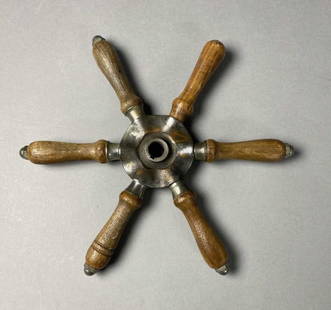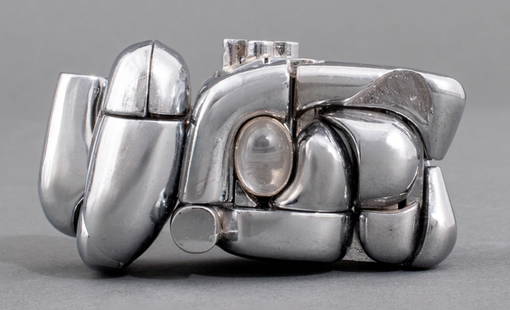
1890s-1900s 4 MARY POTTS NICKEL PLATED MAPLE SAD IRONS
Similar Sale History
Recommended Items





Item Details
Description
The AEAA is proud to present this great lot of 1890s-1900s salesmans sample sad irons courtesy of Mary Potts. These exceptional nickel sheathed double ended collar / lace sad irons were designed to reduce friction, and avoid burn throughs. All have the traditional patented dual claw positive locking maple handles, with the total weight 2# 12 oz., with the largest measuring 3.75 x 2.75 inches tall, and 3 are in excellent condition, with one having significant wear. The locking handle and arched cast handle guides is certainly derived from the original Mary Potts (see history below) of Ottumwa, Iowa 1871 patented design. These fine heirlooms are from the living estate of Ailene & Buddy Ford, respected, longtime dealers of valuable antiques. xxxxxxxxxxxxxxxxxxxxxxxxxxxxxxxxxxxxxxxxxxxxxxxxxx. The original Patent Model of Mrs. Potts Cold Handle Sad Iron, was Patented 1870 by Mary Potts. This patent model shows that the body of the iron was cast hollow, but and was later filled with material that was a non-conductor of heat, such as plaster of Paris, cement or clay. Mrs. Potts claimed in her modified patent that this material held the heat longer so that more garments could be ironed without reheating the iron. Mary Potts received a series of patents for variations on her iron, including the revolutionary form of the detachable solid walnut handles in 1871. Some patents also were reissued. Her second patent reads as follows: Sad Iron, U. S. Patent 113,448, April 4, 1871, Mary Florence Potts, Ottumwa, Iowa. The invention is a detachable handle for pressing irons. This permits a person to heat a number of iron bodies on a stove, attach the handle to one and iron with it until it cools, then attaching it to another heated iron body. One problem with sad irons is that they cooled quickly, which meant work had to stop while irons were reheating. One solution was the charcoal iron, which was hollow to hold charcoal or a hot piece of metal. “Box,” “ox-tongue,” and “slug irons” were also designed to hold a heated slab of metal. Charcoal irons unfortunately released a lot of smoke, and it was difficult to design them so the coals got enough oxygen to stay lit. Some came with chimneys to protect the garments from smoke, while others had small openings to help fan the flames. In the final analysis, the pragmatic solution was multiple bases reheating, and replacing the cooling body under the handle periodically. The highly technical test for the readiness of the next base was water on the end of the finger, and a touch for the ssssst response.Also as a quick aside, the electric iron was invented in Ontario, Canada in 1882, but at the time, most regions of the United States didn’t have electricity, and those that did, only had it only at night for lighting. Earl Richardson in Ontario, Canada, was the first to convince the local electric company (predecessor of Ontario Hydro) to run electricity on Tuesday, ironing day, the day after washing day - Monday. However, a good number of women, particularly in rural areas that were late getting electricity, held onto their sad irons well into the 1950s.
Condition
3 excellent 1 shows wear , 3 have wood handles and one has a metal knob XA - MM95-C
Buyer's Premium
- 15%
1890s-1900s 4 MARY POTTS NICKEL PLATED MAPLE SAD IRONS
Estimate $95 - $110
1 bidder is watching this item.
Shipping & Pickup Options
Item located in SHEFFIELD, AL, usSee Policy for Shipping
Payment

TOP





















































